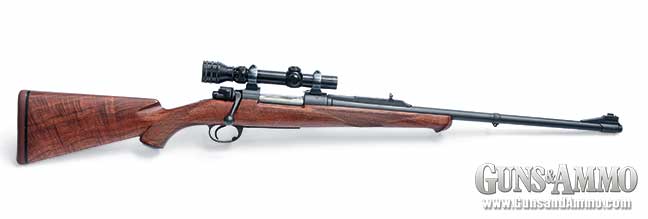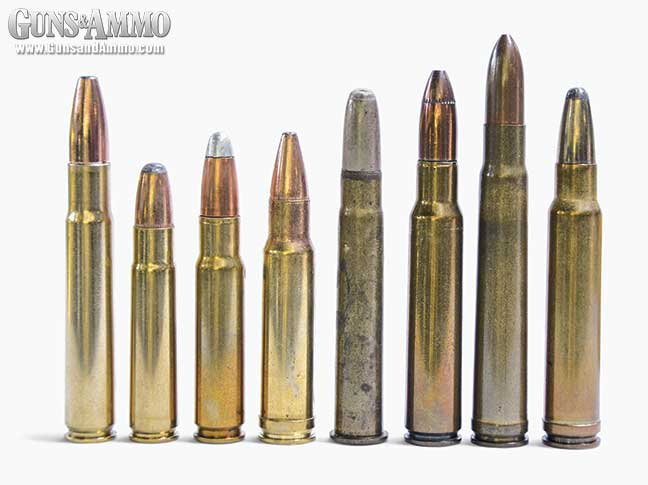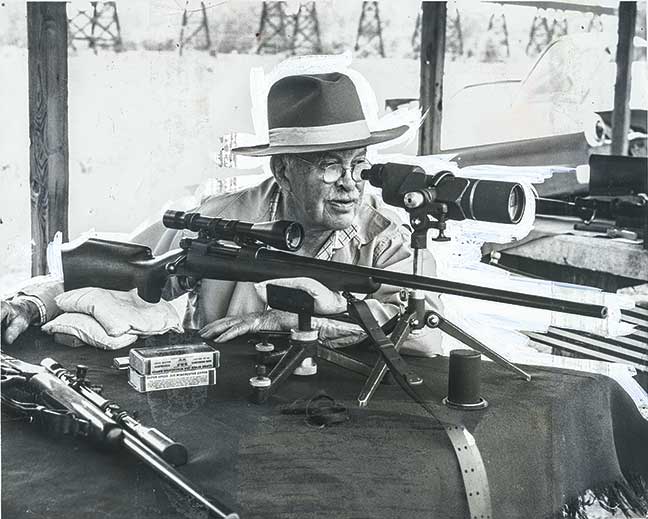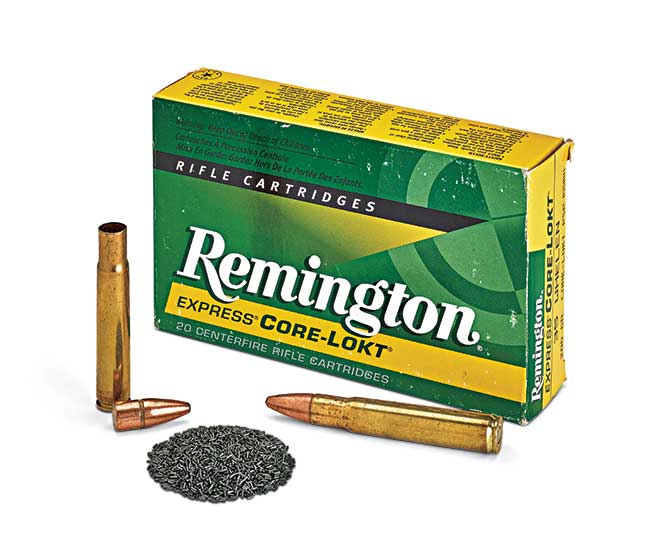Author: Grumpy
Ensign Chekov of the StarShip Enterprise boldly proclaimed; every exciting technology encountered was Russian! We can say the same with Fedor Tokarev. This Comrade blended innovations from other autoloaders and triumphantly declared it was Russian.
The Tokarev 7.62x25mm Semi-automatic pistol was a prolific design, built by nearly every Warsaw Pact country. Some firearm enthusiasts, assume the Tokarev was crude and under-performing. This is a false assumption.
Russia does not mass-produce a firearm of any type, with polished slides or barrels, unless it is absolutely necessary. Russian firearms are mostly stamped steel frames and parts, and the firearms operate precisely as intended and last forever.
Tokarev designed his pistol in the early 1930s as a replacement for the 1895 Nagant revolver. The Tokarev beat out many lofty competitors, including Walther and Luger. Through the decades, they have manufactured the Tokarev in multiple countries, and each country has given the pistol its own special treatment.
Kirk and the crew would have been Proud!
Major Influences to the Tokarev
Browning’s locked-breech was a significant influence, keeping the swinging link system of the Colt 1911. Production simplicity also influenced Tokarev’s design. Magazine production was simplified by eliminating the feed lips and machining them into the frame. Safeties were also done away with. Chekov would have been proud!
Russian firearm design principles revolved around production efficiency and easy maintenance on the battlefield. One feature many shooters like is that Tokarev built the hammer assembly for easy removal and cleaning. Given the harsh conditions in Russia, this was a necessity.
The Black Star or Model 54 Tokarev is an interesting variant of the Soviet version TT-33. This pistol got its unique name by its large embossed star on the black wooden grips.
Tokarev pistols were built around the powerful 7.62x25mm cartridge.
We have an outstanding lot of “Black Star” pistols. These Chinese Type 54 Tokarev semi-auto pistols are chambered in the original 7.62x25mm caliber. Built by Norinco (North China Industries), they are in Very Good to Excellent condition. The Tokarev’s are C&R Eligible, and come with an 8 round magazine.
7.62x25mm Cartridge
Russia developed the 7.62x25mm Tokarev cartridge as a replacement for its long-standing C96 Mauser. The 7.62 is a powerful round with different muzzle velocities ranging from 1300 to 1800 fps. Experts consider the 7.62 an “over-penetrating” round for most home defense applications, which means the round may remain lethal even after penetrating its intended target
AllOutdoor gives this review of the 7.62x25mm, “The plus side of the load is its high penetration, sufficient to defeat car body panels and lower-level body armor. The downside is its high penetration, almost guaranteeing that the bullet will exit an unarmored opponent and keep going. That’s a liability.
Despite this potential problem, quite a few people carry pistols in 7.62×25. They are relatively inexpensive, robust, and have a dieselpunk style to them. The two most popular models are CZ vz.52, a roller-lock delayed blowback Czech pistol, and a TT33, a Soviet locked-breech design with very simple lockwork.”
History and Tokarev Copies
After World War II, the Soviets began their search for a compact pistol to replace the Tokarev. In 1951, they adopted the Makarov. Warsaw Pact countries used the Tokarev for several years, which led to production outside the Soviet Union.
Classic Firearms offers several fine examples of Tokarev pistol chambered in 7.62x25mm cartridges and produced outside of Russia, including:
- Romanian TTC Tokarev Pistol, 7.62x25mm. Mfg. by Cugir Factory in Romania at Good to Excellent condition.
- Pakistan Tokarev, 7.62x25mm. Mfg. by Badar and Brothers-Peshawar Plant, Pakistan.
- Polish TTC Tokarev, 7.62x25mm, Very Good to excellent condition. Mfg. in Radom Poland. Safeties may have been added for import regulations.
- Yugoslavian M57 TT Tokarev, 7.62x25mm. Pistols are considered in Good condition. Mfg. at Zastava Arms, Kragujevac, Serbia. (your spell checker may blow up)
Type 51 Tokarevs were built with a combination of Russia and Chinese parts in China. It is likely the Soviets supplied much of the production machinery to China. Any type 51 pistols are those that were likely brought home by GIs during the Korean War.
Type 54 pistols were built entirely in China. Production of the type 54 appears to have started around 1955 and continued until 1985. It is logical to assume (Spock raises his pointed ears at this assumption), single acquisition, Type 54 pistols found in the United States were manufactured between 1966 and 1967. Most of these Tokarevs were VietNam War Trophies.
China and North Korea’s relationship extended to the manufacture of Tokarevs. These pistols have designations of either Type 66 or 68, and closely resemble the TT-33. However, slides are shorter with a beavertail extension at the rear. North Korean Tokarevs incorporate linkless systems, similar to the Browning High-Power.
We rarely see North Korean Tokarevs in America; if one does show up, collectors snap them up in a time-warp.
Another Tokarev for collectors to look at, the Tokagypt. (I am not making that name up) Tokagypts were manufactured in Egypt, and by all accounts were well-made and very reliable pistols. The original contract called for 30,000 pistols; however, only half were delivered. Significant differences from the TT-33 model; Tokagypts were chambered in only 9x19mm, and featured a thumb safety and a wrap-around grip.
Final Thoughts
The Tokarev is an impressive handgun, given the fact it is almost 100 years old. The pistol is an excellent value for the money; with good build quality and excellent durability. This economical pistol is designed for hard military use, and is perfectly capable of being used for recreational shooting.
Externally, the Tokarev looks very similar to the Colt 1911, with many shooters thinking it is just a modified version. There are a few significant differences. Hammer and sear is simpler than the 1911, with the hammer being external. The feed ramp is machined into the receiver, rather than part of the barrel, among other differences.
Tokarev’s 7.62x25mm round usually performs best with light loads, the 85 to 90 grain work best. The cartridge is fast and has a lot of energy. The 7.62 is a level 2 armor piercing round, but like I said earlier, it can over-penetrate with higher loads. The 7.62 is hard to compare with other ammunition, but overall it is a very good round.
Tokarev’s design, like many others of the day, has lasted decades and is quickly moving into its second century as a firearm that is still effective and viable. Firearm inventors of the day felt function over form was the key to a great firearm and history has proven them right. A great design never goes out of style.

The U.S. Supreme Court on Wednesday will hear oral argument in Caniglia v. Strom, a case that could have sweeping consequences for policing, due process, and mental health, with the Biden Administration and attorneys general from nine states urging the High Court to uphold warrantless gun confiscation. But what would ultimately become a major Fourth Amendment case began with an elderly couple’s spat over a coffee mug.

People view the Supreme Court building from behind security fencing on Capitol Hill in Washington, … [+]
ASSOCIATED PRESS
In August 2015, 68-year-old Edward Caniglia joked to Kim, his wife of 22 years, that he didn’t use a certain coffee mug after his brother-in-law had used it because he “might catch a case of dishonesty.” That quip quickly spiraled into an hour-long argument. Growing exhausted from the bickering, Edward stormed into his bedroom, grabbed an unloaded handgun, and put it on the kitchen table in front of his wife. With a flair for the dramatic, he then asked: “Why don’t you just shoot me and get me out of my misery?”
Perhaps unsurprisingly, the tactic backfired and the two continued to argue. Eventually, Edward took a drive to cool off. But when he returned, their argument flared up once again. This time, Kim decided to leave the house and spend the night at a motel. The next day, Kim phoned home. No answer.
Worried, she called the police in Cranston, Rhode Island and asked them to perform a “well check” on her husband and to escort her home. When they arrived, officers spoke with Edward on the back deck. According to an incident report, he “seemed normal,” “was calm for the most part,” and even said “he would never commit suicide.”
However, none of the officers had asked Edward any questions about the factors relating to his risk of suicide, risk of violence, or prior misuse of firearms. (Edward had no criminal record and no history of violence or self-harm.) In fact, one of the officers later admitted he “did not consult any specific psychological or psychiatric criteria” or medical professionals for his decisions that day.
Still, police were convinced that Edward could hurt himself and insisted he head to a local hospital for a psychiatric evaluation. After refusing and insisting that his mental health wasn’t their business, Edward agreed only after police (falsely) promised they wouldn’t seize his guns while he was gone.
Compounding the dishonesty, police then told Kim that Edward had consented to the confiscation. Believing the seizures were approved by her husband, Kim led the officers to the two handguns the couple owned, which were promptly seized. Even though Edward was immediately discharged from the hospital, police only returned the firearms after he filed a civil rights lawsuit against them.
Critically, when police seized the guns, they didn’t claim it was an emergency or to prevent imminent danger. Instead, the officers argued their actions were a form of “community caretaking,” a narrow exception to the Fourth Amendment’s warrant requirement.

UNITED STATES – JANUARY 7: The U.S. Supreme Court is seen on Thursday, January 7, 2021. (Photo By … [+]
CQ-ROLL CALL, INC VIA GETTY IMAGES
First created by the Supreme Court nearly 50 years ago, the community caretaking exception was designed for cases involving impounded cars and highway safety, on the grounds that police are often called to car accidents to remove nuisances like inoperable vehicles on public roads.
Both a district and appellate court upheld the seizures as “reasonable” under the community caretaking exception. In deciding Caniglia’s case, the First Circuit U.S. Court of Appeals acknowledged that “the doctrine’s reach outside the motor vehicle context is ill-defined.” Nevertheless, the court decided to extend that doctrine to cover private homes, ruling that the officers “did not exceed the proper province of their community caretaking responsibilities.”
Siding with law enforcement, the First Circuit noted that a police officer “must act as a master of all emergencies, who is ‘expected to…provide an infinite variety of services to preserve and protect community safety.’” By letting police operate without a warrant, the community caretaking exception is “designed to give police elbow room to take appropriate action,” the court added.
In their opening brief for the Supreme Court, attorneys for Caniglia warned that “extending the community caretaking exception to homes would be anathema to the Fourth Amendment” because it “would grant police a blank check to intrude upon the home.”
That fear is not unwarranted. In jurisdictions that have extended the community caretaking exception to homes, “everything from loud music to leaky pipes have been used to justify warrantless invasion of the home,” a joint amicus brief by the ACLU, the Cato Institute, and the American Conservative Union revealed.
This expansion could also have perverse effects and disincentivize people from calling for help. As that brief noted, “When every interaction with police or request for help can become an invitation for police to invade the home, the willingness of individuals to seek assistance when it is most needed will suffer.”
But in its first amicus brief before the High Court, the Biden Administration glossed over these concerns and called on the justices to uphold the First Circuit’s ruling. Noting that “the ultimate touchstone of the Fourth Amendment is ‘reasonableness,’” the Justice Department argued that warrants should not be “presumptively required when a government official’s action is objectively grounded in a non-investigatory public interest, such as health or safety.”
“The ultimate question in this case is therefore not whether the respondent officers’ actions fit within some narrow warrant exception,” their brief stated, “but instead whether those actions were reasonable,” actions the Justice Department felt were “justified” in Caniglia’s case.
As a fail-safe, the Justice Department also urged the Supreme Court to uphold the lower court ruling on qualified immunity grounds, arguing that the officers’ “actions did not violate any clearly established law so as to render the officers individually liable in a damages action.”
But the Biden Administration, along with the courts that have extended the community caretaking exception, overlook a key component of the Fourth Amendment: the Security Clause. After all, the Fourth Amendment opens with the phrase, “the right of the people to be secure.”
In an amicus brief, the Institute for Justice noted that “to the Founding generation, ‘secure’ did not simply mean the right to be ‘spared’ an unreasonable search or seizure” but also involved “harms attributable to the potential for unreasonable searches and seizures.” Expanding the community caretaking exception to “allow warrantless entries into peoples’ homes on a whim,” argued the IJ brief, “invokes the arbitrary, looming threat of general writs that so incited the Framers” and would undermine “the right of the people to be secure” in their homes.
The IJ brief further argued that extending the “community caretaking” exception to the home would “flatly contradict” the Supreme Court’s prior rulings, which “has only discussed community caretaking in the context of vehicle searches and seizures.” In those cases, “the animating purpose for the exception [was] to allow officers to remove damaged or abandoned vehicles that pose a risk to public safety.” By contrast, the IJ amicus asserted, “that justification is entirely absent” when it comes to homes.
“The Fourth Amendment protects our right to be secure in our property, which means the right to be free from fear that the police will enter your house without warning or authorization,” said Institute for Justice Attorney Joshua Windham. “A rule that allows police to burst into your home without a warrant whenever they feel they are acting as ‘community caretakers’ is a threat to everyone’s security.”
Colt Frontier Scout
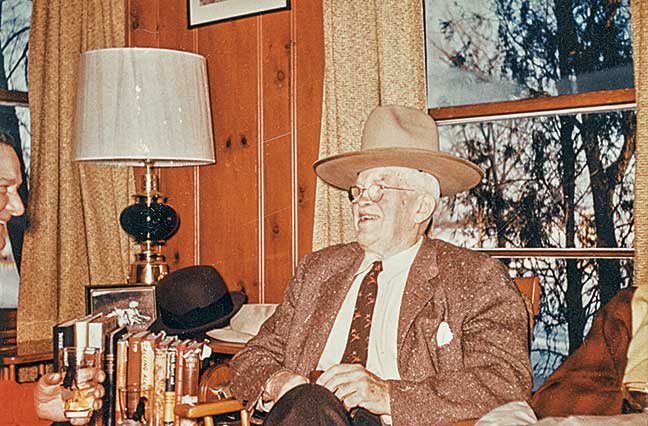
Remington forever legitimized the .35 Whelen when it began loading it in 1988. Eventually, Big Green would offer it in the Model 700 as well as its slide-action and semiautomatic rifles.
Prior to that, however, the .35 was one of our most popular wildcats. For about as long as it has been around, its origin has been debated. Some are convinced it was James V. Howe who created it, and others argue with equal fervor that it was Col. Townsend Whelen.
The argument rages on despite the fact that Whelen long ago settled it in two of his books. In the .35 Whelen section of “Why Not Load Your Own?” (1957), he writes, “This cartridge was developed by James V. Howe in 1922 and named for the writer.”
Page 271 of “The Hunting Rifle,” which was published during the early 1940s, reads in part, “In 1922, Mr. James V. Howe and the writer developed the .400 Whelen cartridge. This cartridge was constructed by taking the .30-’06 case before it had been necked at all and necking it down to .40 caliber.
About the time we completed development of this cartridge, I went on a long hunting trip in the Northwest, and when I returned, Mr. Howe showed me another cartridge that he had developed. The .30-’06 case was necked to .35 caliber to use existing .35-caliber bullets. Mr. Howe asked my permission to call this cartridge the .35 Whelen, but he alone deserves credit for its development

After leaving Frankford in 1923, he got together with Seymour Griffin and formed Griffin & Howe, a shop that became widely known for building fine custom rifles. The partnership did not work out, and after about six months, Howe moved on to Hoffman Arms Company in Cleveland, Ohio, where he stayed for a long time.
Even though Col. Whelen staked no claim to the .35 Whelen, we still owe him partial credit for its existence. During the 1920s, American Leslie Simpson was considered to be an authority on hunting the African continent. Among other things, he, along with novelist Steward Edward White and a couple of others, was said to have taken more than 50 lions during a control shoot lasting three weeks.
Simpson and Whelen became friends, and during one of their conversations, Simpson mentioned using the .35 Winchester and finding it lacking. What was needed for taking thin-skinned African game, including lions, was a cartridge of the same caliber but capable of pushing along a 250-grain bullet at 2,500 to 2,600 feet-per-second. Whelen passed the idea on to James Howe, who came up with two cartridges, one of which was the .35 Whelen while he was at Frankford Arsenal.
After moving on to Griffin & Howe, Howe followed up with the .350 G&H Magnum, and it was loaded by Western Cartridge Company.
Whelen had several favorites, but reading his books, I find very little evidence of the .35-caliber cartridge bearing his name being one of them. In fact, I’m not sure he ever actually hunted with it.
The book “Mister Rifleman,” published by Petersen Publishing Company after Whelen’s death in 1961, has a chapter titled “A Rifleman’s Battery.” It’s filled with two-page-spread photos of about 30 rifles owned by Whelen along with comments on each written by him. The only rifle in the group in .35 Whelen was built on a 1903 Springfield action by James Howe in 1922 and originally had a Niedner barrel in .400 Whelen.
Due to very little shoulder on its case for headspacing, the .400 was a troublesome cartridge to reload and shoot, yet Whelen did not get around to having the rifle rebarreled to .35 Whelen until around 1950, long after he did most of his hunting. His reloading manual came out seven years later, and he may have needed a rifle in .35 Whelen for developing the loads published in it.
Col. Whelen was a practical man, and my guess is that he had very little use for the .35 simply because the game he successfully hunted was easily taken with cartridges of smaller calibers and less recoil. His 40-year Army career began not long after the .30-40 Krag was adopted, and both became favorites in the hunting fields.
He later became equally fond of the .30-’06, 7x57mm Mauser and .257 Roberts, but the .270 Winchester that accounted for his best moose seemed to be his favorite. There were others in his life, both factory and wildcats, with the .243 Winchester and .308 Winchester among the last he wrote up while on the technical staff of Guns & Ammo.
Someone who did hunt a great deal with the .35 Whelen was Elmer Keith. Before using it, he used a custom Springfield in .400 Whelen given to him by James Howe in 1925. Like Whelen, he eventually had his rifle rebarreled to .35 Whelen and used it to take what he described as a record-book brown bear during his first hunt in Alaska in 1937.
Keith took the bruin with a 275-grain bullet made by Western Tool & Copper Co., his favorite for all-around use. He loaded 57 grains of IMR 4064, but that powder in his day was a bit slower in burn rate than today’s version, since 52 grains is now considered maximum with a bullet of that weight. Elmer speculated that the 300-grain roundnose made by Fred Barnes might be a better choice when hunting elk in heavy timber, but I don’t believe he actually got around to trying it.
In notes written about his .35-caliber Griffin & Howe Springfield, Whelen recommended two loads for it with IMR 4350. One was 61 grains behind a 275-grain roundnose bullet made at the time by Joyce Hornady. Velocity was 2,375 fps. The other was 60 grains with the Barnes 300-grain bullet for 2,350 fps.
He must have been using special brass because I am unable to get that much IMR 4350 into factory .35 Whelen cases or those formed from various brands of .30-’06 brass and still have enough space left to seat bullets at the overall cartridge lengths required by the magazines of various bolt-action rifles. The heaviest charges I can squeeze behind 275- and 300-grain bullets are 59 and 53 grains, respectively, for velocities of 2,219 and 2,059 fps.
Reloder 15 has become the powder for .35 Whelen handloads, not only for me but for several other hunters I know who use the cartridge. Clean-burning, it delivers top velocities with all bullet weights, accuracy is usually very good, and it meters through powder measures with minimum charge-to-charge variation.
Maximum charges with all bullets weighing from 180 to 210 grains are either 100 percent density or close enough to it. If I were to pick a second favorite, it would be Vihtavuori N-140. Others with similar burn rates include Accurate 2520, Varget, W748 and IMR 4064. Various reloading manuals have data for all of them.
Today’s bullets are much better than in Elmer Keith’s time, and lighter weights than those used by him are capable of taking any game most would want to hunt with the .35 Whelen.
For those who wish to turn back the calendar to the good old days, a few heavyweights are available. Loading the heavier bullets also puts the .35 Whelen on a more equal footing with the 9.3x62mm Mauser. Woodleigh offers a 275-grain Weldcore, and from Swift we have a 280-grain A-Frame. Both are a bit long for the 1:16-inch twist of Remington rifles and usually require 1:14 or quicker.
The Woodleigh 310-grain roundnose is available in both expanding and solid styles; both require a 1:12 twist. I have not tried the 275-grain Lion Load bullet from A-Square, but since it is of roundnose form, it should work in a 1:16 twist. I believe Savage rifles have a 1:12 twist, but I’m not sure about Brownings, Rugers, Winchesters and others.
Unprimed cases are available from Nosler, Hornady, Remington and Norma USA, but necking up .30-’06 cases as in the old days remains an option. A tapered expander button in most .35 Whelen full-length resizing dies makes doing so easy. Applying a light coat of wax-type resizing lube (available from Hornady and Redding) to the mouth of each case makes the job go smoothly. Case loss should be zero if new brass is used.
Remington continues to offer two .35 Whelen loads: 200-grain Core-Lokt and 250-grain softnose, the latter a Hornady bullet. Federal Premium loaded with the 225-grain Trophy Bonded Bear Claw is a good choice when sticking with one load for everything from mice to moose. Nosler ammunition loaded with 225- and 250-grain Partition bullets has a following, and Winchester loads the cartridge as well.
Hornady Superformance with a 200-grain softpoint is the fastest factory load available. I wondered whether the 2,920-fps velocity printed on its box was a misprint, but skepticism turned to amazement when my Oehler Model 33 indicated an average of 2,962 fps from the 22-inch barrel of my Mauser. That’s more than 100 fps faster than maximum handloads with 180-grain bullets in that rifle. It should be devastating on deer. A second load with the 225-grain GMX at 2,800 fps or so would be equally effective on elk and other large game.
I have also owned a couple of Model 700s in this caliber, but my favorite is a custom rifle built about 25 years ago by Butch Searcy, who is now better known for building fine double rifles. He began the project by installing one of Sam May’s Apex barrels on a Whitworth ’98 Mauser square-bridge action.
The barrel is 22 inches long, and since the Barnes 275- and 300-grain bullets were available back then, I specified a rifling twist rate of 1:12 inches. Butch also machined a quarter rib for the barrel, installed a banded ramp sight up front and modified the bolt shroud for a Model 70-style safety.
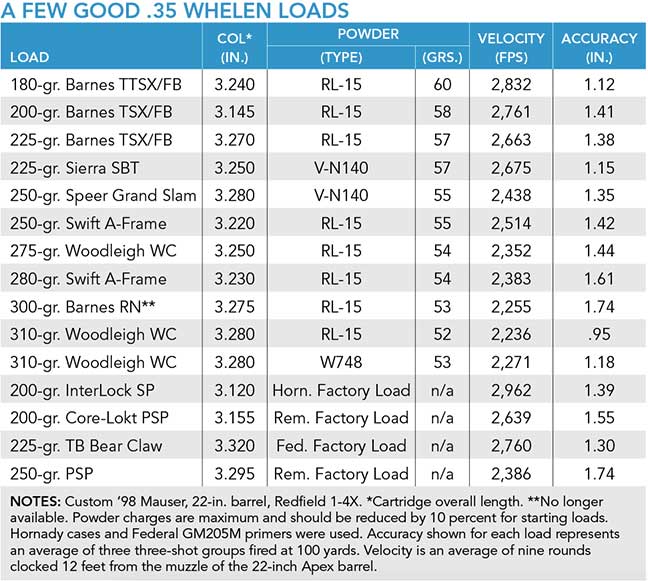
The barreled action was stocked by E.C. Bishop & Son custom shop in Warsaw, Missouri. The only scope it has ever worn is a Redfield 1-4X variable from the 1960s. It is held in place by quick-detach rings available at the time from Kimber of Oregon. Weight with scope is 8½ pounds. It is the most consistently accurate rifle in .35 Whelen I have ever owned and quite comfortable to shoot.
Down through the decades, a number of .35-caliber cartridges have been introduced, but not a single one has managed to win the hearts of America’s hunters. They range from oldies such as the .35 Remington, .35 Winchester, .35 Whelen, .35 Newton and .350 Griffin & Howe Magnum to newer numbers such as the .358 Winchester, .356 Winchester, .350 Remington Magnum and .358 Norma Magnum.
The .35 Remington was once quite popular among hunters in the east. It is the chambering I chose for my very first store-bought deer rifle and was used to take my first black bear. Sad to say, very few Marlin 336s in that caliber are sold these days.
The .35 Whelen has yet to win a popularity contest among hunters and probably never will, but the fact that it has been in use for more than 90 years is proof of its ability to shrug off the challenges of more modern cartridges. It may eventually be the only cartridge of its caliber we have left.
30 M1 Carbine: An Awesome Gun





